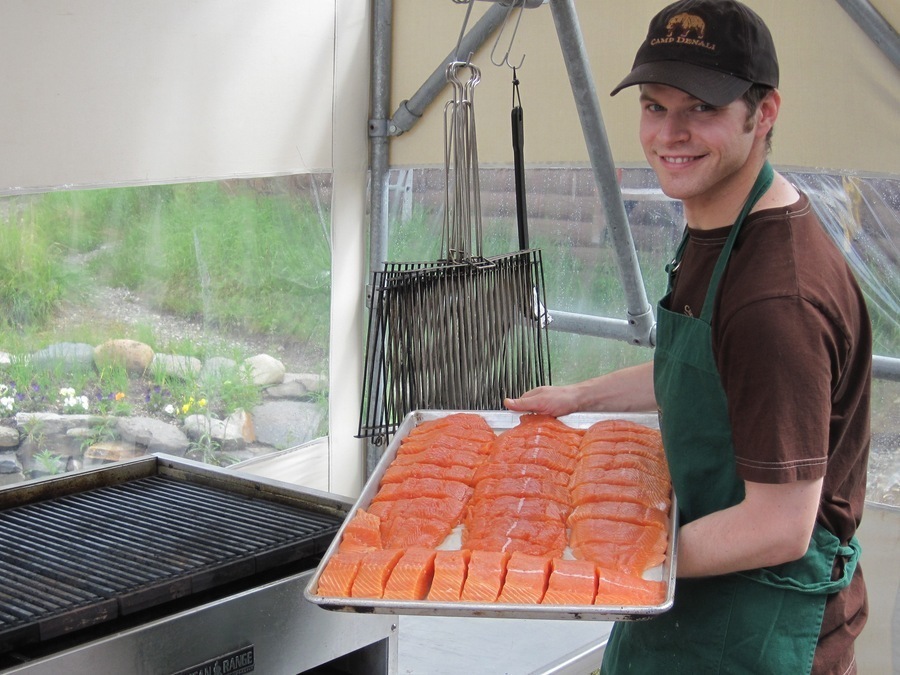Perhaps you have been hearing at your local seafood counter that the Copper River red salmon are in. According to Alaska Department of Fish and Game, the Copper River commercial fishery peaked around June 4 with 26,200 fish passing through the sonar site daily. To date this season, more than 417,000 have entered the Copper River system en route to spawning grounds, with more still on their way. In mid-May, the fist Copper River sockeye salmon (“red” is a term used to describe sockeye salmon) arrived in Seattle and the 46-pound fish received the red carpet treatment as it disembarked the Alaska Airlines plane on it’s way to the kitchen of a top local chef. Growing up in Seattle, this was always an exciting and much anticipated time of year. We often featured this prized fish at neighborhood BBQs, park potlucks and boating excursions. In the Puget Sound area, we were won over by the flavor and the successful marketing campaign of the Copper River fishery.
Since being transplanted to Alaska, I have happily been able to routinely incorporate salmon into my diet through a variety of means: smoked salmon snacks in winter, fresh grilled salmon dinners by summer and a stack of fresh caught frozen fillets that line my freezer waiting to hit the table mid winter. Like so many of those in the state now, as many generations have done before, I may travel some distance when the fish are running to secure salmon for the winter. I’ve now finally seen the infamous Copper River and participated in the Alaskan tradition of dip-netting for reds as they make their way by the thousands each day upriver toward their spawning grounds. Fishing for salmon, whether by net at the mouth of the river, rods from a boat or shore, or dip-nets on the Copper or Kenai Rivers, is very much an Alaskan way of life and economic powerhouse, not to mention a way to secure nutritious, healthy and wild grown food for our tables. It is a very closely monitored fishery, and so far, one that seems to be quite healthy.
In the spirit of celebrating the season of the salmon, here is a recipe straight from our Camp Denali and North Face Lodge kitchens this year. May your tables be rich with a taste of the Alaskan wilds!
Roasted Tomato and Preserved Lemon Vinaigrette for Grilled Alaskan Salmon
*Note: Prepare vinaigrette at least two hours before serving to allow flavors to meld well. The recipe is loose to allow for chef’s discretion.
1 qt grape tomatoes
½ shallot, minced
½ C fresh lemon juice
zest from 1 lemon
parsley, finely cut
tarragon, finely cut
chives
extra virgin olive oil
salt and pepper to taste
- Toss grape tomatoes lightly with oil and salt and roast on sheet pan until they just begin to caramelize and concentrate their flavors. Let cool.
- Macerate shallots in lemon juice for at least 20 minutes.
- Combine tomatoes, lemon, shallots and preserved lemons in bowl and agitate with a wooden spoon to break down tomatoes until they get the texture of a chunky sauce.
- Emulsify with olive oil.
- Finish with salt, pepper and fresh herbs.
Cook salmon as desired (we prefer using our barbeque grill) and spoon vinaigrette atop before serving. Serves 4




